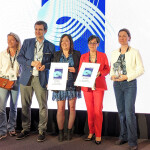The Global Aquaculture Alliance(GAA)’s GOAL 2013 wrapped up today with a series of panels on the retail markets along with a call to recognize the health benefits of seafood and the diversity of the seafood markets.
Linda Cornish, executive director of the Seafood Nutrition Partnership, spoke about her nonprofit’s emergence in May as a new voice in the campaign to get the public to eat more seafood. She is on a mission, she said, to raise USD 15 million (EUR 11.1 million).
“This is a journey toward health,” she said.
The average American, she said, eats 2,000 pounds of food a year, but of that, seafood is the smallest category. Cornish cited studies that show eating seafood reduces the risk of heart disease, which is the number one killer in America.
“It really is a public health crisis,” she said.
Cornish also noted the cost of heart disease. According to the American Heart Association, it costs a total of USD 273 billion (EUR 201.8 billion) to treat heart disease today, and is expected to cost USD 819 billion (EUR 605.5 billion) by 2030.
“This is not just the seafood industry’s burden to bear,” she said.
Also speaking was Marie Christine Monfort, a senior consultant at Marketing Seafood and Sea-Matters. Her presentation covered primarily the aquaculture markets in her native France.
There, she said mussels are the Number One farmed seafood, with 190,000 metric tons (MT) consumed annually, 95 percent of that farmed. In order, salmon, trout, shrimp and oysters made up the rest of the top five species, all of them with a significant percentage from aquaculture.
But the public doesn’t always understand that, she said, and that needs to change.
“The consumer is ignorant,” she said. “The consumer just does not know.”
Above all, however, Monfort cautioned the attendees to remember that Europe is a diverse market. Despite the political unity coming from the E.U., the markets still recognize the regional divisions of old.
“Europe is not one market,” she said. “It is a diversity of different markets.”
Retailers from the United States and Europe also assembled to answer questions about marketing farmed seafood. Representatives from BJ’s Wholesale Club and Delhaize America told SeafoodSource that farmed salmon and similar popular species are perennial best-sellers in their markets. As demand continues to grow for farmed seafood, they said, the store offerings will respond.





